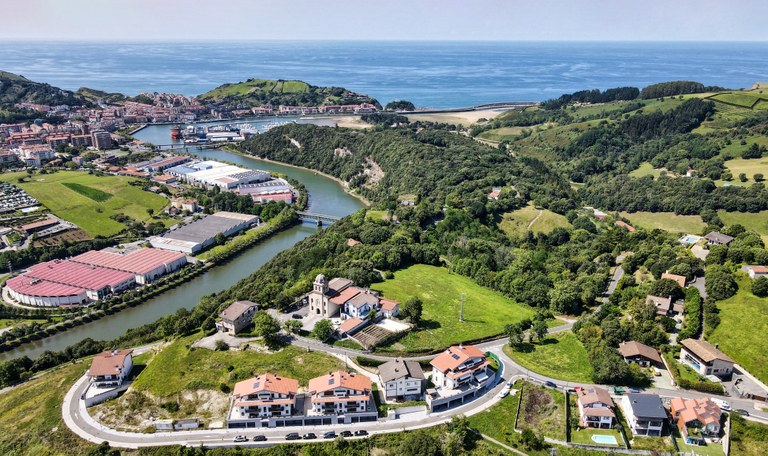Zumaia beyond its town centre
Zumaia is located in one of the most unique coastal spots in Gipuzkoa province.
It’s not only a special place, but also a privileged one because, to the north and steeping the town in saltpetre, we can find the Cantabrian SeaIts cliffs also boast the renowned, world-leading Flysch: a true gem in the Geology field and a feast for the eyes.
If you travel inland, you come face-to-face with Zestoa and its history: Ekain and the rock paintings in these caves. Through the Ekainberri museum and its replica, you can discover how the first humans lived 14,000 years ago and imitate them by making fire, hunting and more.
The Askizu neighbourhood in Getaria watches over the village from the east, but at sunset we suggest you look to the west to admire the last sunbeams hiding behind the coast between Deba and Biscay province.
Zumaia has around 10,000 inhabitants and most of them live in the town centre, but it also has neighbourhoods located further out that are full of life. Artadi and Oikia particularly stand out.
Artadi can be found on top of a hill, amongst wonderful forests (oak groves), and you can take in one of the most beautiful views of our town from its church, looking over Zumaia, the Urola river and the sea. You can reach it on foot from Zumaia on what is a lovely outing, especially if you have children with you, because the route is pleasant and easy. Once you arrive, you can enjoy a small pelota court and a few children’s games – it’s perfect for spending a morning or afternoon. On the subject of the pelota court, we can’t overlook that it’s the birthplace of a well-known dynasty of pelota players: the Etxabe Dynasty, which is now the namesake of an important pelota tournament in Zumaia.
From Artadi, we have a beautiful view of the Oikia neighbourhood, San Bartolomé church and “Kondekua” House. One of the most special ways to reach Oikia is by rowing along the Urola river. Along the way, you’ll pass through Bedua: a place as bucolic as it is beautiful.
Like Artadi, Oikia was also the birthplace of a distinguished figure: the famous painter Baltasar de Extabe. The painter moved to Mexico in 1573 and, aside from founding and promoting the Spanish painting school, he was considered one of the great Spanish painters of his era, along with Zurbarán and Murillo.
In addition to these two charming neighbourhoods, on the road running from San Sebastián to Bilbao, we can find a third area: Narrondo. Although at first sight it may seem to have nothing to offer, it conceals a great industrial tradition. In fact, the banks of the river of the same name were adapted for hydraulic systems such as mills and foundries, meaning that the neighbourhood had a mill in 1344 and two foundries in 1535, along with a port and a market. All these circumstances paved the way for the start of industrialisation in Zumaia, an episode of history which can still be seen and discovered in Narrondo.
Zumaia’s neighbourhoods are gems too. Explore and admire them - you won't regret it!

 turismoa@zumaia.eus
turismoa@zumaia.eus
 Bulegoa
Bulegoa











